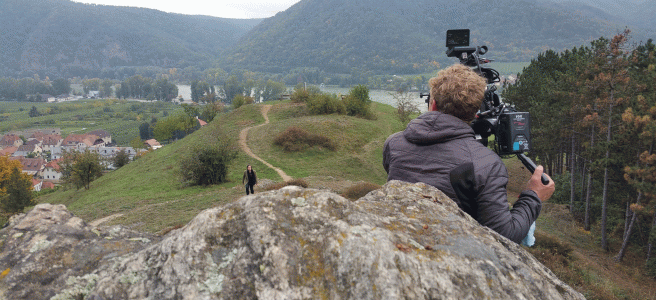Once more into the fray… Normally for the JMHC programme I can be found poncing around various kitchens cooking up historic dishes and explaining the social history behind them. For the Xmas special, however, I have a somewhat different role. The historic food slots are still in the programme – the fab Ivan Day is thoroughly in his element – but I got sent (begged to be allowed to go) to Austria as a roving food reporter. Given how much I like eating hefty meaty stews, dumplings and how much I am a die-hard Sound of Music fan, this was pretty much THE BEST THING THIS YEAR. Turns out I really like schnapps as well. Winner.
I’m aware that the slots are quite short, and the food quite brilliant, so I’ve put full details of the various producers here to help anyone desperate to track down the delights featured in the programme for themselves. Enjoy.
Annie’s travels in Austria.…
(in filming order, not necessarily in the order in which the films will be shown – I’ve put the air date for each at the end)
Day 1: Norbert Santeler, patissier for café 3440 on the Pitztal Glacier (airs 8th Dec)
We came off a stupidly early flight, landed, got in a van, and went straight up a mountain. The Swedish, German, Austrian and Slovakian ski teams were practicing on the slopes and the entire film crew got mad altitude sickness and spent the time drinking fat Coke and trying not to fall over. The views were so mind-numbingly beautiful that I don’t think it was really possible to take them in. And the challenges of cooking at high altitude were significant – Norbert is a weather forecast junkie, because high and low pressure affects how dough and pastry behave, and water boils at lower temperatures at altitude anyway. It is all sufficiently challenging that the café took a while to gear up to making and selling its own, rather lovely cake – despite the Austrians being utterly, madly, cake-obsessed. Cake is everywhere, and it is very, very good cake. We made a sort of cheesecake right up in the top of the glacier itself. It was -1°c and the gelatin was setting as we tried to use it. Insane.
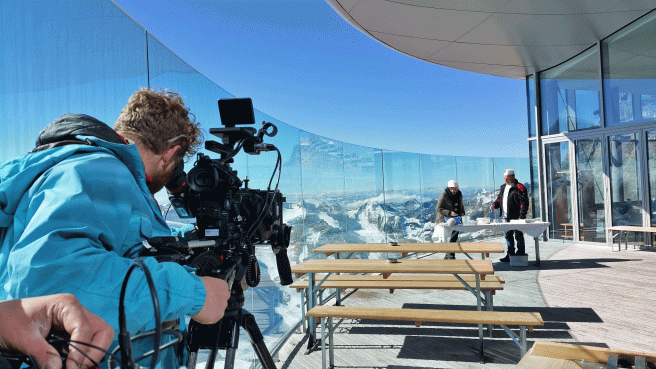
Day 2: Hans-Joerg Haag and Therese Fiegl, Schoko-Haag, for Tiroler Edle chocolate (airs 14th Dec)
The surreal sight of 20-odd grey cows peacefully grazing while every 2 minutes a ski lift passes over their heads isn’t really something easily communicated on camera. It was like a parallel universe James Bond film (one where the latest instalment wasn’t a chronic disappointment, maybe, but hey). The cows are a breed specially adapted for mountain regions, with wide hooves, strong legs and the ability to put on fat from low grade pasture. Therese is a sort of enabler, and has masterminded a range of chocolates based on the products of the immediate region. Yes, obviously, the cocoa mass isn’t from the Tyrol, for cocoa beans don’t grow in Europe. However, with this exception, the chocolates produced under the Tiroler Edle brand are pretty much made using stuff the chocolatier can see from his window. The milk (and cream for the ganaches) comes from the aforementioned cows, and the flavourings are all natural and all very, very local indeed. There are various filled bars – cranberry (which is universal in Austria, and I’m not a fan), mountain honey, hazelnuts, chestnuts etc etc, and a small range of filled chocolates. They are pretty lovely. Hans-Joerg has a shop, as does Therese, and they sell a lot on the web. The biggest internet seller is a bar which is technically almost illegal ish, as the EU food guidelines don’t have a category for it. It’s a 70% cocoa solids bar which contains no sugar at all – it relies on the milk for sweetness. My dad used to work for Rowntrees, now Nestlé, as a chocolate scientist, so I took him some for nerd value. It’s not great, was our verdict. Chocolate really needs a bit of sugar to bring out the flavours. Clearly, if you are diabetic, bring it on, and in the current silly ‘clean eating’ climate I’m sure it’ll do well. But my advice is to gorge on the filled bars, which are sublime. The Xmas specials, which include spiced apple, are among the best chocolate bars I have ever eaten.
Oh, we ate a lot of wild cranberries as part of this. Weird little beasties. I prefer barberries.
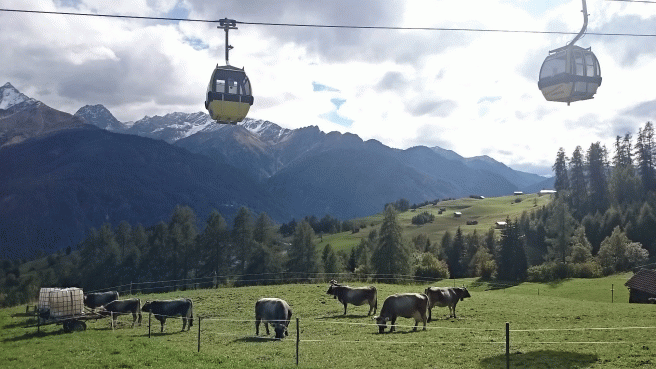
Day 3: Brennerai Josef Schimpfössel, Stanz (airs 15th Dec)
Day three started really well. I’d drunk 2 schnapps before 9am. They were only small servings – 2cl is the usual size – and in Austria schnapps is THE drink for welcoming friends, strangers, children, passers-by….and it’s medicinal, and wakes you up, and helps you get going, and helps you digest, and helps you sleep, and is good for toasting stuff, and celebrating the end of things, and having in the morning, and the afternoon, and the evening….. Unlike the flavoured booze I make at home, this is the real deal. The fruit is fermented, then distilled with nothing added, then redistilled to yield a clear liquor of about 80% alcohol. It’s aged briefly, watered down to make it less lethal, and bottled. The Schimpfössels grow all their own fruit and operate the distillery as a cottage industry – everyone in the family has a ‘proper’ job, and Autumn is a sort of frenzy of fruit prep, during which everyone is enlisted to do their bit. The town itself has 50 official distilleries (out of 150 households), but my suspicion is that there were a lot more hidden behind closed doors. Unlike in the UK, where regulations brought in to curb the production of gin in the 18th century still affect would-be home distillers today, small scale distilling is pretty common in Austria. Wherever we went there were portable stills being hauled out of garages and set up ready to capture the fruits of the season. Apart from the fact that no one was vomiting in a gutter, and the resulting products were really high quality and probably wouldn’t kill you, I suspect it wasn’t a million miles away from London during the 17th and early 18th century gin craze.
The high point was properly discovering schnapps. The low point was me merrily abusing my German skills (I studied it at school and was determined to make a good showing, but I speak much, much better French), making up the word for ‘still’, and accidentally asking the lovely Josef how breastfeeding worked in the Tyrol. Note to self: stillen = breastfeeding. Brennerai = still. Um.
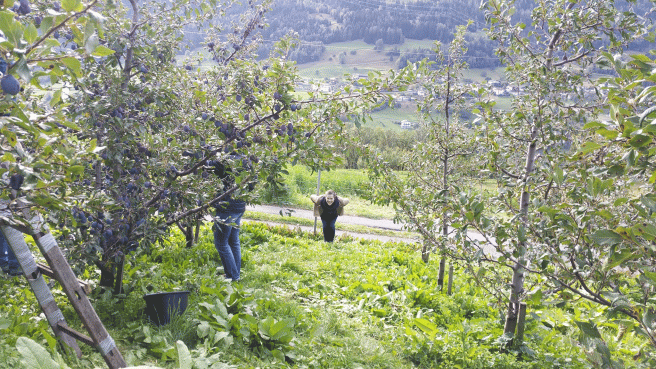
Day 4: Heinz Gstir and the family Bischofer, Senneri Hatzenstädt, Niederndorferberg (airs 7th Dec)
Up at 4am to go and nearly die as a giant milk float took off at great speed and with no warning from a half empty dairy in the dark. Heinz, who is a local dairy farmer, heads up a co-operative which took over the dairy a few years ago. At the time it was struggling, which meant that the livelihoods of the 25 or so high mountain farmers who depended on it as a market for their milk were at risk of going bust. The farms in question are too remote and too small to be able to supply big dairies and still make a profit. The solution for them, since the 1930s when the system was installed, was to zip wire their milk down the mountain, directly to the dairy, which then processed it into butter and cheese. When Heinz and the co-op took over, they quickly concluded that the only way to remain profitable in the modern big agri-business-led food world, was to go upmarket. The dairy now has full organic certification, but it remains totally independent and unfunded by outside support. This is a pretty big deal – a lot of the people we visited were affiliated to various organisations or umbrella brands, most often ‘Gnussregion’. This is a scheme set up by the government specifically to promote regional food and encourage food and drink tourism. It struck me as a jolly good idea, and had clearly benefited many of the small scale artisan producers we encountered. But Heinz and the farmers decided to do it on their own and set their own rules, so that the dairy would benefit exactly the people it most needed to, while preserving a culinary and farming heritage which was close to dying out. A true co-operative, indeed. Bravo. At the dairy, raw milk butter and amazing cheese is sold in a small shop, along with a few other products, and they have a roaring trade supplying walkers. It was the only shop in Austria not in a major tourist town that I saw open at a weekend, so no wonder.
Other things I did: milked cows, fed goats, ate oodles of kletzenbrot, made butter (not in costume for once, whoop – apart from the white coat and hat), drank more home-made schnapps.
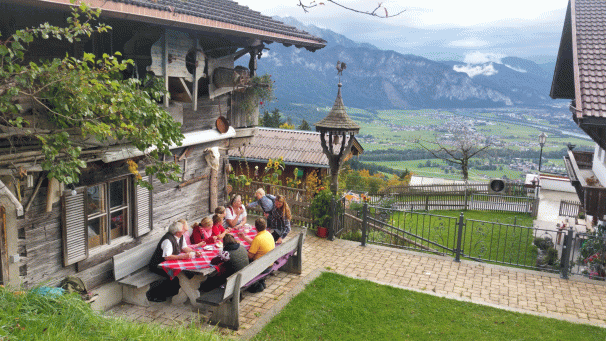
Day 5: Theresia Bacher, the rauchkuchl at Stulfelden (airs 18th Dec)
This day was so crazy I can’t even think about it without reaching for the schnapps. Words fail me. The views were stunning though, and the food incredible.

Day 6: day off…
During which I dragged the whole crew to Salzburg to pay homage to the Sound of Music. Dan, the lovely cameraman, bought socks. Florian, the equally lovely runner and driving maestro, bought shoes. Director Sophia and I ignored them both and hit the souvenir shops.

Day 7: Peter Paffrath, Peters Land, carp farm (and general smallholding) (airs 9th Dec)
Back when Britain was a Catholic country, the days of Advent leading up to Christmas were official fast days, upon which all animal products were to be avoided, and only fish and non-animal products eaten. Obviously, the same was true for the rest of Catholic Europe too, and, along with Rome, Austria was the heartland of Catholicism. The head of the country was the Holy Roman Emperor, after all. Anyway, reading recipe books of the seventeenth century and before makes it clear how big a part of British culinary life fish was (and remained, as fish was invariably present as the second course of large dinners up to and beyond the end of Victoria’s reign). In medieval and early Tudor England, fish or fast days formed over half of the calendar year for an observant Catholic though, and fish cookery reached heights later generations could really only dream of. The range of fish, like the range of meat, that we ate was far larger than that consumed today. Carp was a definite favourite. In Austria, it’s far more closely linked to Christmas than any meat, and it’s traditionally eaten at the end of the Advent fast (no longer kept today, obvs), as a feast dish fit for Christmas Eve. I’ve always been told it’s a muddy fish, not worth eating. In the UK today it’s associated with Eastern Europeans, who, like the Austrians, regard it as THE Christmas dish. I asked Peter about the muddy thing, and about my sneaking suspicion that denigrating a fish we clearly ate for centuries as ‘muddy’, and not even trying it may just feed in to a certain sense of superiority versus migrant workers. Nah, says he, Eastern European carp can indeed be muddy, and as such, that’s a taste many people who eat it have grown to like. His fish isn’t at all muddy, anyway. He and his wife, who breeds Sheltand ponies, are impassioned advocates for all things pure, and he feeds the fish only the good stuff, ensures that the water is lovely, and, most importantly, says that the cold mountain climate helps keep the taste fresh and fishy. We ate it fried in butter. It was lush.
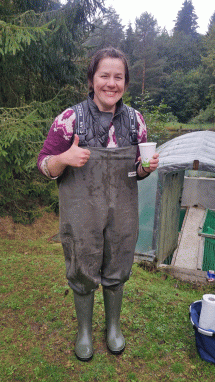
Day 8: Chris Mayer and Maria Scholz, Zuckerlwerkstatt, Vienna (airs 10th Dec)
Chris is an ex-rock god, turned sweet maker. The showmanship suits him. This whole day was brilliant fun, and I can see why people flock to stare in awe as they watch sugar and glycerine being turned into mini bits of rock. I was aware of the principles, of course, but the bit where pulled sugar is handmade into tiny, intricate edible art miniatures was less clear. You will see the process on the telly, and there’s a video on their website as well. Essentially, it makes you realise that there is no need whatsoever for all the magical shenanigans inside Willy Wonka’s factory: the real thing is mind-boggling enough. It reminded me of glass-sculpting, with which Chris says there are, indeed, many similarities – working in intense heat, risk of major burns, the need to work rapidly, the translucent beauty of the material and the delicacy of the end product. Can’t eat glass though, so I reckon sweets win. One of the high points of the day was seeing a late 19th century catalogue of sweets and chocolates produced by the Heller company (and meeting Herr Heller himself). Well into the 20th century sweets of this type were made by hand because there was simply no way to mechanise such an intricate and time-consuming process. Indeed, to reach the heady heights of some of the stuff Chris, following in the footsteps of Heller at its peak, is producing, there’s no conceivable way machines could get involved. Of course, all this means that the sweets cost more than the average mass-produced roll of artificially flavoured nastiness. Fine. You aren’t really supposed to gorge on the buggers. But the demands of the public for cheap, sugary yuckiness, and lots of it, and a corresponding failure to appreciate artisan-led production, led to the demise of the hand-crafted sweets, and subsequent demise of Hellers, in the 60s. The factories were sold off, some to Rowntrees, now Nestlé. I think it’s fab that Chris and Maria are helping to bring back a long lived classic, but – and this is important – do it in a way which works with modern market conditions. It’s a premium product, and deservedly so. And I say that, and I don’t really have a sweet tooth…

Day 9: Bernhard Kaar, Wachauer Safran (airs 11th Dec)
Bernhard is half soft-spoken academic, half action man. He used to work for the Austrian equivalent of DEFRA, until a nagging desire to recultivate saffron in the Wachau got the better of him. He says he tried for years to find out about its cultivation and history in the Wachau, but, as with Saffron Walden in the UK, the time when it grew and was harvested regularly had passed out of living memory, and people didn’t quite believe him that the Wachau and saffron went together like beef and plum pudding (not his metaphor). Then, one day, while furkling in a monastic library, wherein the monks didn’t really know what they had, he came across a copy of a late 18th century printed guide to…cultivating saffron in the Wachau. Boom. I adored Bernhard. He was passionate about the product, the history, and the culture surrounding saffron, but also switched-on to making it work as a 21st century business. His dream is to see saffron brought back to all the areas of Europe which once grew rich on the saffron trade – Essex and Cornwall being the English growth centres in the 15th century and thereabouts. (There are a couple of English growers now, one of whom is based near Saffron Walden and tells tales of its heyday, when the streets were turned purple with discarded petals, and the scent of spice hung heavy in the air – etc – he’s on a Kitchen Cabinet episode on Boxing Day). We made a cake. The batter was beautiful, and for an instant I totally ‘got’ saffron. The scent is incredible, the colour rich…. As usual, though, I found that cooked it was nowhere near as lovely. Bernhard’s saffron is absolutely beautiful – but I have a sneaking suspicion that I’d rather eat cake and just breathe in the heady scent. Pleb.
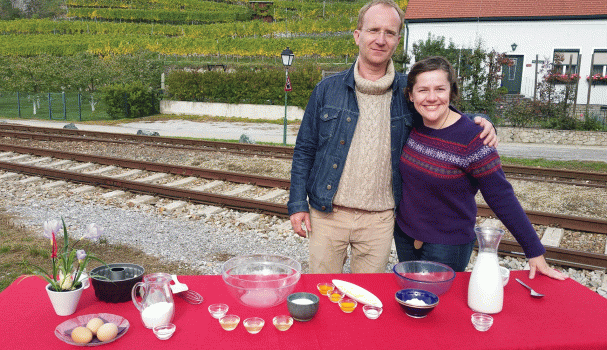
Day 10: Wiesner family, Mangalitza pig supremos, Arche de Wiskentale (airs 16th Dec)
I won’t beat about the bush. I’m a big fan of all things pork, and I was massively looking forward to this day. Mangalitzas are a Hungarian breed, valued above all else for the quality and quantity of their fat. And, as we all know, fat means flavour. They are also real lookers. They are often known as sheep-pigs for their coat is not mere bristles in the way of most British pigs, but actual real life, proper curly, fluffy fur. There was once a British pig which closely resembled them, which I’ve had a soft spot for ever since I heard about it: the Lincolnshire curly coat. Now extinct, it was reputedly a very friendly and very tasty pig. There are early 20th century pictures of kids riding about on them, and they were a mass of white curly fluff. They were even exported to Austria-Hungary and cross bred with the Mangalitza to make a Lincolnitza, according the to ever-reliable Shire Guide to British Pigs. However, the Mangalitza is slightly different. The Lincs version, like most British pigs, was snub-snouted. The Mangalitza is far more like the wild boars from which pigs are eventually descended. It has a pointed face, and the males have decided tusks. The piglets are stripy, again like boars, though they come in red, white and black (and are adorable). Christoph and Isabell have farmed them since they received a breeding pair as a wedding present (I have friend envy), and are now world-renowned for their knowledge. They don’t, however, sell the meat they produce, due to some convoluted set of legalities which I only half understood. They mainly sell livestock, and their own extensive knowledge. Christoph also practices a particular type of butchery, which doesn’t really feature on the show, but which was magic to watch. Seam butchery involves cutting out each individual muscle, still wrapped in what he calls the ‘bone skin’. It’s very hygienic, very interesting, and frankly rather like watching a sculptor at work. And OH! the meat. I ate it 12 ways, including raw fat, lardo, rare skirt, long cook pocket, tripe stew, spleen on toast and lard pastries. All of it was gorgeous (especially the spleen toasts actually). All hail the Mangalitza for it is gooooood.
(NB: you can buy Mangalitza hams and the meat itself from various places in the UK – Google is your friend. I have just purchased a Xmas joint and sundry other items from Brynheulog Rare Breeds, and they were brilliant – even managing to fish out a spleen for me….).

Day 11: Ursula Kujal and Harald Thiesz, Bio Feigenhof Wien (airs 17th Dec)
The last day. We were all, unsurprisingly, knackered, and the figs were all that kept us going. That and, it must be said, the schnapps. Figs make excellent schnapps. And geist (an infused version of schnapps, I think). They also make excellent ice cream, jam, marmalade, vinegar, and the little ones are pretty stunning soaked in booze. Yes, yet more booze. The story behind the rather random sight of a Mediterranean fruit growing in sub-zero temperatures on the outskirts of Vienna is fairly simple. Ursula and Harald took over what amounts to a humongous allotment, or mini smallholding, on the outskirts of Vienna, so that they could grow fruit and veg. It came with a couple of industrial-sized greenhouses, so they thought they’d have a crack at growing figs. After all, who doesn’t like figs? Theirs are exceedingly luscious – better than anything I’ve eaten in the UK. As with the carp and plums, they suggest that the extremes of temperature are apparently a big help. The trees are sown directly in the ground, no need to bind the roots, and are very productive. They prune them when they threaten to break through the roof, but otherwise largely leave them to it – and they have loads of varieties, in every colour from white to red and yellow. I gorged on them, and through that experimental process can say honestly that 8 should probably be most people’s limit.
Hey ho, fig joy got me happily through Vienna airport, where the Sleazyjet gates are a sort of wasteland, inhabited only by Mozart chocolates, Toblerone and paprika crisps. Not a bacon sarnie in sight. Sigh.
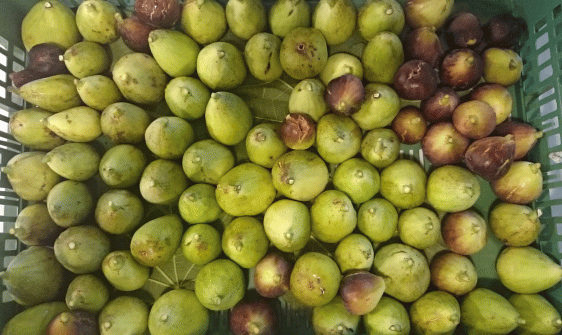
The opening shots are of Innsbruck Christmas market, by the way.

James Martin – Christmas Home Comforts airs every weekday from from the 7th to the 17th December, on BBC1 at 3.40pm. It’s repeated on Saturdays as an 30mn special, straight after Saturday Kitchen. The un-Christmassy Home Comforts is back with a brand new series on January 4th, and runs for 3 weeks. I’m back for that in my more usual slot, cooking and commenting on food from the 1760s to the 1960s. The link to the BBC homepage is here.
p.s. my own personal moment of joy…..


